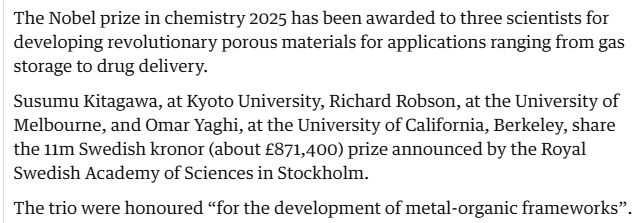Neil Withers
@neilwithers.bsky.social
1.4K followers
840 following
210 posts
Features Editor for Chemistry World, Twitter refugee. Tractor fan
Posts
Media
Videos
Starter Packs
Reposted by Neil Withers
Reposted by Neil Withers






